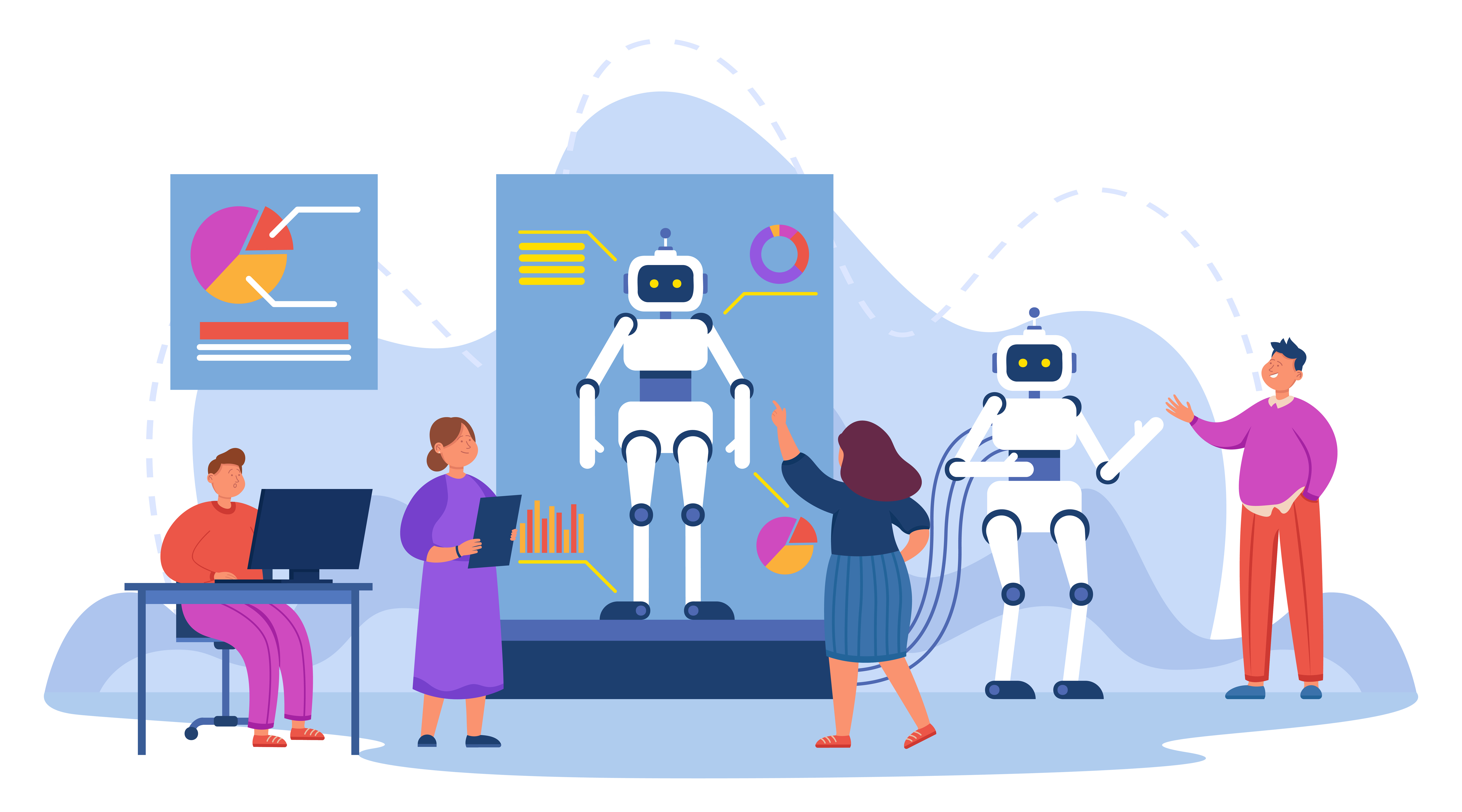· Dr. Andreas Koeberl · 4 min read
The Shift from Productivity Tools to AI Co-Workers
How AI co-workers are replacing traditional tool handling, enabling seamless workflows, scaling tasks, and transforming organizations towards hyper-productivity.

In the evolving landscape of workplace technology, the shift from traditional productivity software to intelligent AI agents as co-workers marks a new era in efficiency and innovation. These AI co-workers are designed to integrate seamlessly into business systems, autonomously managing complex tasks and workflows on behalf of human users. By leveraging extensive data and advanced machine learning models, these agentic systems make real-time decisions, enhancing the overall productivity and intelligence of modern work environments.
The Evolution of Workplace Productivity
The journey toward advanced workplace efficiency began with basic productivity software and intelligent systems. Tools like word processors, spreadsheets, and email clients helped streamline routine tasks, laying the foundation for more complex workflows and agent-based systems. As businesses expanded, the demand for greater efficiency led to the development of automation tools powered by artificial intelligence. These intelligent tools automated repetitive tasks, managed complex workflows, and provided valuable data insights through advanced data analysis models, enabling businesses to scale more effectively.
The next significant leap came with the introduction of AI assistants and intelligent agents. Unlike traditional automation tools, AI assistants brought context-aware capabilities to the workplace. They could schedule meetings, set reminders, and respond to emails by integrating with various enterprise systems, offering a more personalized experience. However, despite their advancements, AI assistants still required considerable human input and feedback, which limited their overall impact on productivity.
Now, we stand at the threshold of a new era with the emergence of AI co-workers—intelligent agents designed to act as integral parts of business systems. These intelligent systems don’t just assist with tasks—they take on entire roles, autonomously managing workflows, making data-driven decisions, and collaborating with human employees. By leveraging generative language models and advanced AI applications, this transformation is set to redefine workplace productivity and achieve business goals more effectively.
Why Hyper Productivity Remains Elusive
Despite the proliferation of new tools and AI features, many businesses struggle to achieve hyper-productivity. The root cause? Tool overload and the limits of human absorptive capacity to effectively learn and utilize complex systems. Integrating multiple software platforms and managing diverse workflows can overwhelm employees, hindering the intended benefits of these intelligent tools.
As the market becomes saturated with productivity tools and AI-driven platforms, businesses face an overwhelming array of options. While each software application offers unique benefits, integrating and managing them all can create a fragmented work environment. Employees often find themselves juggling multiple platforms, each with its own learning curve and workflow requirements. Rather than enhancing productivity, this fragmentation often leads to inefficiency and burnout, undermining the potential of intelligent systems to improve business processes.
Moreover, while AI assistants and intelligent agents can handle specific tasks, they still rely heavily on human oversight and feedback. The cognitive burden of managing these tools, interpreting their responses, and making decisions remains on the shoulders of employees. As a result, the promise of true hyper-productivity often goes unrealized. Even with advanced AI capabilities and secure data handling systems, the issue of data privacy and security remains a challenge, requiring businesses to implement stringent measures to safeguard sensitive information.
How AI Co-Workers Solve This Challenge
AI co-workers offer a solution to the productivity paradox by serving as intelligent agents within business systems. Unlike traditional tools and basic AI assistants, AI co-workers are designed to integrate seamlessly into existing workflows and platforms, minimizing the need for constant human intervention. These intelligent systems leverage APIs and advanced software to automate complex tasks, manage workflows, and support users in achieving their goals efficiently.
These AI co-workers don’t merely automate tasks—they understand the context in which those tasks are performed and can manage entire workflows autonomously. For example, an AI co-worker acting as a Junior Account Manager can handle client follow-ups, schedule meetings, and generate reports without requiring continuous direction. Additionally, AI co-workers can interact with other intelligent agents and machine learning models through APIs to exchange information, enhance decision-making processes, and create more intelligent business actions.
This seamless integration of AI co-workers into business systems reduces the cognitive load on human employees, allowing them to focus on higher-value activities like strategic decision-making, creativity, and innovation. AI co-workers are also scalable, capable of managing increased workloads as the business grows, without the need for additional hires or the complexity of managing multiple tools. By building intelligent workflows and leveraging artificial intelligence, businesses can significantly improve their operational efficiency and achieve their goals more effectively.
As AI systems continue to evolve, they are also equipped to handle and mitigate ethical challenges through advanced machine learning models and intelligent processing. These systems address potential biases and inaccuracies in decision-making processes, ensuring fair and unbiased outputs. By integrating feedback mechanisms and continuous learning capabilities, AI co-workers maintain high standards of intelligence and reliability, promoting ethical practices within enterprise environments.




